Hi, Blanchetters!
We’ve updated gallery with stills from The Four Temperaments and behind the scene photos from 77th Venice Film Festival and some of them at a higher resolution. Cate also interviewed photographer, Gregory Crewdson, for the Gagosian Quarterly which you can read below. You can watch a part of The Four Temperaments and an interview for Stateless below. Enjoy!
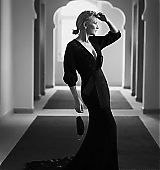
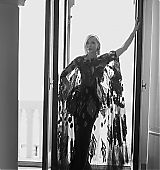
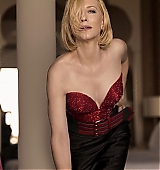
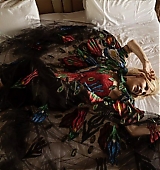
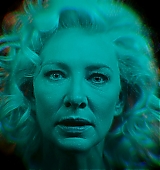
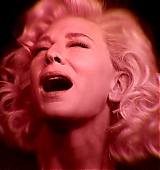
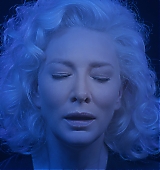
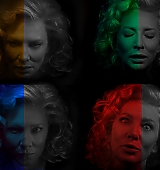
Cate Blanchett Stars in a High Culture Project You Can Watch on Your Phone
What’s an actor to do during a pandemic? There are Zoom plays, homemade music videos about the trials of love in lockdown, or, if you’re Cate Blanchett, avant-garde video projects exploring the human condition. As of Friday, at the Michael Fuchs Galerie in Berlin, you can watch Blanchett turn inside out two simple phrases—“I love you” and “I don’t love you”—in Marco Brambilla’s video The Four Temperaments. (If you’re staying closer to home these days, you can also experience the work, as of today, via the augmented reality app Acute Art.)
Blanchett’s pulsing iterations of the phrases are filtered through four different colors, her face bathed in a carmine yellow glow one minute and traffic-light green the next. The colors are meant to evoke the four humors as described by the ancient Greek philosopher and medical writer Galen, with each tone corresponding to a specific temperament: sanguine (yellow), choleric (red), melancholic (blue), and phlegmatic (green).
This is not the first time that Blanchett has participated in a project more at home in a museum than a multiplex. In 2016, the actor starred in 13 short films, simultaneously projected in the cavernous Park Avenue Armory in Julian Rosefeldt’s Manifesto. That work transplanted the texts of historical manifestos—by visionaries ranging from the Dadaists and Russian abstract artist Kazimir Malevich to filmmaker Jim Jarmusch—and the effect was disorientingly powerful. Dated didacticism, when animated by a genre-bending character (a woman resembling an elementary school teacher, or a wandering homeless man—all played by Blanchett), felt fresh and eye-opening.
That work, it turns out, provided fodder for Brambilla’s project, which plays out on a smaller but no less compelling scale. Brambilla came across Albrecht Dürer’s Melencolia in the course of some research; this led him to Galen, and then to the idea of having one person attempt to embody all of the philosopher’s temperaments. While Manifesto’s effect was dependent on unexpected contrasts and evocations of whole historical landscapes, Brambilla set out to test, as he puts it, “something far simpler”: “Would you be able to create drama using only two lines of dialogue and four basic character types in dialogue with one another, and all performed by the same actor?” Of course, not just any actor would suffice. Having seen Manifesto, Brambilla knew he wanted to work with Blanchett. “Cate performing all the characters made the piece compelling since her range and ability to recede into the character is unique even among the most experienced actors,” he says.
Though it was filmed in the artist’s studio in the midst of the pandemic, the process of creating the work, says Brambilla, was not actually that different than it would have been in more normal times. The film was conceived as a virtual experience as much as a physical one. “I think art will have to engage with people beyond gallery and museum walls,” says Brambilla. “With the advent of virtual reality and now augmented reality, we can bring artworks into almost any setting, public or private, and the engagement can in some cases be even more powerful than a conventional museum installation.”
Stateless Interview
Gregory Crewdson discusses his new work with actor Cate Blanchett
CATE BLANCHETT I have to say, without sounding stalker-ish, that I’m a huge admirer of your work. There are a thousand questions I want to ask you. Your works have really affected the way I look at the world, but I suppose specifically how I look at America. I think it’s hard not to find, or to search out, social commentary in art, even at the best of times. Everything seems so resonant to this strange, vertiginous time that we find ourselves in at the moment. And I’m wondering, given that you’re about to unveil a new body of work, how you feel about the way that it might be received? Do you think about your work in a social-commentary way? One work in particular from An Eclipse of Moths really struck me, and that was Red Star Express [2018–19], with the teenagers looking at a truck on fire, each seemingly unaware of their relationship with one another. Where do you sit in terms of social commentary and how the work might be received?
GREGORY CREWDSON Well, it’s very interesting to me because I made this series of pictures in 2018 and 2019. And I knew that I was dealing with certain particularly American themes about isolation and a certain kind of brokenness, I would say. But for the most part I was just building on my own iconography, making what I hoped would be beautiful and mysterious pictures.
My central intention is to make a picture that feels moving on some level, but also haunting. I’m really interested in what I call the uncanny. That is, I’m trying to explore what, on the surface at least, seems to be everyday life, and trying to find within that some unexpected anxiety, or fear, or wonder, even. In that way the pictures are very much in line with all my previous pictures, but as with anything else, context, the period we’re in, shapes a work of art. The pictures can’t help but take on new meanings as time passes; that’s just part of how art works. I feel that all art functions in reference to other pictures while at the same time referring to your own particular story, you know, the story that we all have within us. And then, finally, it makes some kind of connection to the moment we’re in. So I’m hoping that these pictures, in one way or another, do all those things.
CB Speaking of the uncanny, your titles are so enigmatic, unexpected, and often mysterious. I mean, why An Eclipse of Moths?
GC Well, it’s an actual term to describe the congregation of moths to a light. I thought that was such a beautiful metaphor on many levels, starting with the fact that I think all my pictures at their foundation are concerned with light. All of the narrative codes in my pictures use light as a way of transforming the subject or making the picture.
And then one of the themes that run through the pictures is the streetlamp. It’s in almost every single picture. I’ve thought of the photographs’ lone figures wandering through empty streets in that way: they are drawn to the streetlamp almost as a kind of force, or for some sense of the possibility of redemption.
CB A woman walking alone at night thinks of a streetlamp as a place of refuge, but there’s also something sinister and alien about the iconography of the streetlamp. In Starkfield Lane [2018–19] the lamp has actually collapsed—there’s something very vulnerable about the streetlamps in the series, they’re not places of refuge. And the streets themselves seem like the streets of Los Angeles and every major city around America right now [during this lockdown]. It’s almost like you’ve got second sight or something. There’s no comfort in the light, somehow, in the ways there perhaps had been in previous works of yours.
GC One of my primary interests in these pictures was the theme of emptiness. Where a lot of my previous work was more predetermined in terms of the story lines, I wanted these to feel open-ended and unresolved in terms of what’s happening, what happened before, and what will happen after. I’m really hoping these pictures feel somewhat outside of time, and yet, almost paradoxically, relevant to the moment we’re in. If you notice, there are no signs of contemporary life in the pictures. There are no cell phones. There are no new cars. I want everything in the pictures to feel both nondescript and slightly worn, slightly broken. So I look for locations that can accommodate that narrative or that state, and we put in our own prop cars and our own street signs, and we work closely with the city to make sure that no streets are paved and that all the grass remains unmowed. We want the feeling of a place that’s been somewhat forgotten and neglected. We change out all the streetlamps—we actually put different bulbs into the streetlamps, and we work with the fire department to wet down all the streets, and we use fog machines. All this is part of an effort to create a world that feels both familiar and enchanting at the same time.
So if the pictures have a social commentary, it’s elliptical. It doesn’t reveal itself overtly; it should remain a mystery. All photographs do that in a way—no still photograph can fully reveal its meaning, it’s always left as a question. That’s part of why I respond to photography in the way I do, unlike other narrative forms like movies or literature.
CB I find myself returning continually to works of yours, and it’s really interesting that the meaning and the reference points resonate with different pockets of my life. In both theater and film, when the set designer or the director prepares a mood board, there’s so often a Gregory Crewdson photo on it to say “We want this type of atmosphere.” Your images are so loaded with atmosphere that you can place your own reference points on top.
Do the concepts crystallize as images for you in an almost dreamlike moment? Where do they begin?
GC The process always begins with location. I drive around endlessly—I think being removed from the place, slightly detached, is important, and through that process of returning over and over to a place, an image will come to mind. And usually a quite simple one. I work early to write descriptions with Juliane [Hiam]. We write a one-page description of what’s happening in that picture. That becomes the guidepost for the process. Then I work very closely with my director of photography, Rick Sands, whom I’ve worked with for many years. Slowly but surely, through a long process of preproduction and then production and postproduction, we build up to the making of the picture.
CB I don’t know if this has ever happened to you, but being Australian, when I drive long distances there’s this strange vertiginous thing that happens: even though the steering wheel is here, it could be seven or eight meters away. I often get that vertiginous relationship with your work, too—I’m only arrested from completely falling in by the players, the personas who are in there. And it’s interesting, in this new body of work, the players seem dwarfed by the environment—they seem more inconsequential than they’ve ever been in your photographs. Why is that?
GC I really wanted the pictures to be first and foremost about place. These figures exist in a place that feels meaningful and specific and particular. The figures are centrally important, but it’s their scale in relationship to the larger world that really establishes those themes of dislocation and isolation: the figure gets lost in an expanse of the larger world, or figures are isolated from each other. That dynamic of social distance exists in all of the pictures.
CB In some of your earlier work, the figures somehow seem to be experiencing entrapment. But there’s a slightly different quality here: they’re at bus stops, they’re on doorsteps, they’re on stoops. It’s not being trapped, it’s a profound sense of waiting. Maybe I feel that acutely because of the state we’re finding ourselves in globally, but I found that really resonant in the images.
GC You named something I’m maybe not even conscious of but I think is absolutely correct—that moment of deliberation or waiting. I think that’s key to the work, that psychological paralysis of some sort. It wasn’t something I was really conscious of when I was making the pictures, but looking back at it now, I see a connection of sorts to a series of health issues I was facing. Onto all of my pictures, as all artists do, I project whatever fears or anxieties I’m having. It’s not conscious. Maybe part of what I was looking for in these figures is some version of myself: on some basic level I feel my pictures are revealing of my persona, my character, my biography.
CB There’s a strong relationship in your work between the inside and the outside. Is there a moment in your childhood or early on that you now look back on and think, “That was when I started to form a sense of myself in relation to my aesthetic, in relation to the outside world”?
GC Well, my father was a very powerful figure for me. He was a psychoanalyst, and when I was growing up, in Park Slope, Brooklyn, he had his office in the basement of our home, underneath the living room.
CB Oh, okay. You could hear the screams and the cries [laughs].
GC That was defining for me on many different levels. One of my earliest memories is of watching patients come up the street and go through the basement door, and then there’d be these sessions happening underneath our living room floor. We had to be very quiet during those times, and I remember I used to put my ear to the floorboards and try to overhear the sessions. I never was really able to do that, but that image of lying on the living room floor, trying to hear my father’s sessions with his patients, I think is defining for me: it’s trying to look in everyday life and search beneath the surface for a secret, something forbidden, you know, and trying to project an image in my head of what that might be. That runs through absolutely every one of my pictures, and I think I’ve carried it with me throughout my life—searching for meaning, searching for secrets, searching for mystery within everyday life from a certain distance. Like all photographers, I think, in one way or another I have a relationship to voyeurism. Photography gives you access to worlds that you wouldn’t ordinarily have. It gives you a license, an alibi, in a certain way.
CB It’s like a child’s knowledge that there’s a parallel reality that you can’t name, you don’t have the language to participate in, but you can start to visualize. And it makes me think of Alice Munro and Raymond Carver, those great North American storywriters, and how the work understands and harnesses the banality in which the child lives, but the child understands the cataclysmic, you know? The narratives that you capture and create—do they form between your present and that past? Do you feel there’s always an interplay between your memory and your present state?
GC Any readings I can make of the pictures usually happen retrospectively. I wasn’t even aware when I was making those pictures that maybe they had to do with either some sort of larger social issue or something about my past or present concerns. I had no idea. It’s only now, when I look back at them, that I’m like, Oh yeah, I never really noticed these themes emerging, you know? Because I’m entirely invested in the singular moment, and I look at it so myopically, like my obsession with getting every blade of grass correct. I don’t really have the luxury, in a way, of looking on a larger scale and figuring out for myself what the pictures are about. Even now, I could hazard a guess, but I don’t think I’d really be interested in the pictures if I knew precisely what they were about. Ultimately, the picture has to lead to the next picture. It’s always a search to try to find something that’s continually slightly outside your grasp.
CB There’s a writer, Michael Chekhov, who writes about acting and atmosphere, and in one story he describes a group of revelers coming into a haunted house, and either the atmosphere of the haunted house will gradually subdue the revelers or the revelers will change the atmosphere of the haunted house. There seems to be the same tension between your version of the revelers and the atmospheres that they find themselves in. And I’m wondering, sometimes you place professional actors inside your frames and other times the people are less well-known, almost found faces who are more incidental to the frame. The atmosphere has overwhelmed them. How do you talk to the people who populate your pictures? How do you lead them to understand the world they’re in and their part within it?
GC Well, in this series, all the figures are from the area. We sometimes cast them hours before the picture, or we’d find someone on the street who I thought would be perfect, or I noticed them while we were location scouting a week before. They’re primarily people who live in these areas. We give them a description, and by the time they come on set, I know exactly how they’re going to be positioned. I know exactly what they’re going to be wearing and their gesture, it’s all in my head. I know exactly what I want from the figures and it’s usually almost nothing in terms of a gesture. I want less. I want a moment that feels almost emptied out.
CB We were talking before about the notion of inside and outside. To go at it another way, I always think about the sublime when I look at your work, because there’s something about the towns always bordering the natural world. The relationship to nature that the towns have—towns are built to eradicate nature, but then we see nature’s coming back in. Particularly when the figures are either in the ground or in the water or by the water, they seem almost like fish out of water, returning to something but not knowing how to return. That relationship with nature is really powerful, and I wonder if it links for you to dormant, recessed, deep images from childhood.
GC I’m so glad you mentioned the theme of nature because it’s central to the work. These pictures were made during the height of summer, which is critical. The relationship between these industrial landscapes and impinging nature—there’s a certain underlying suggestion of anxiety in that. But in the end it’s about renewal, and I think that’s really key: nature persists. I do think that ultimately the photographs offer some sense of hope, or beauty, or even redemption.

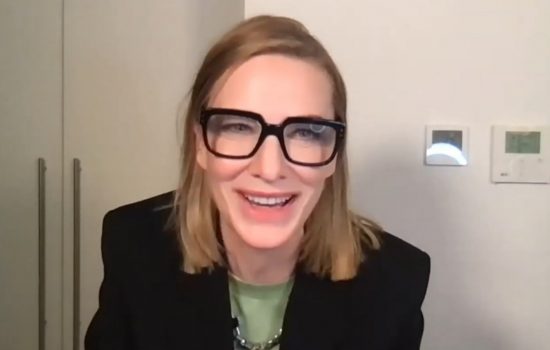
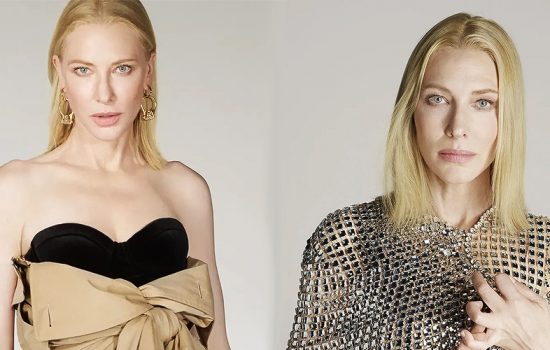

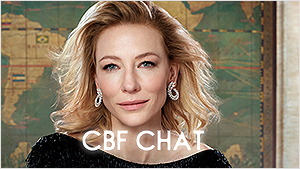
 A Manual for Cleaning Women (202?)
A Manual for Cleaning Women (202?)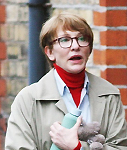 Father Mother Brother Sister (2025)
Father Mother Brother Sister (2025)  Black Bag (2025)
Black Bag (2025) 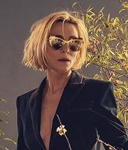 The Seagull (2025)
The Seagull (2025)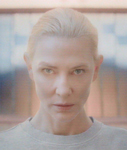 Bozo Over Roses (2025)
Bozo Over Roses (2025)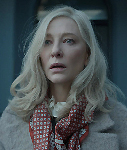 Disclaimer (2024)
Disclaimer (2024) 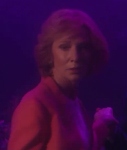 Rumours (2024)
Rumours (2024) 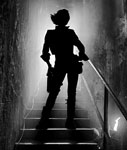 Borderlands (2024)
Borderlands (2024) 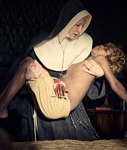 The New Boy (2023)
The New Boy (2023) 











